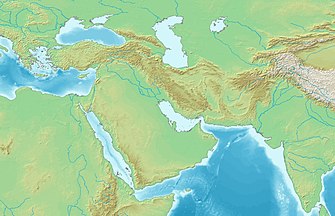
Back ڕاپەڕینەکانی کورد لە جەنگی جیھانیی یەکەمدا CKB شورش کردها در طول جنگ جهانی اول Persian پہلی جنگ عظيم دے دوران کرد بغاوتاں PNB I. Dünya Savaşı'nda Kürt isyanları Turkish پہلی جنگ عظيم کے دوران کرد بغاوتیں Urdu
| Kurdish rebellions during World War I | |||||||
|---|---|---|---|---|---|---|---|
| Part of the Middle Eastern theater of World War I[1] | |||||||
| |||||||
| Belligerents | |||||||
|
|
Various Kurdish tribes | ||||||
| Commanders and leaders | |||||||
|
Ali Ağa | ||||||
| Casualties and losses | |||||||
| Unknown |
Dersim, March - May 1916:
| ||||||
|
Several villages burned, destroyed or looted Large populations of Kurds displaced | |||||||
 |
During World War I, several Kurdish rebellions took place within the Ottoman Empire.
The rebellions were preceded by the emergence of early Kurdish nationalism and Kurdish revolts in Bitlis in 1907 and early 1914. The primary Kurdish war aim was the creation of an independent Kurdish state, a goal that Britain and Russia promised to fulfil in order to incite Kurdish resistance. Other reasons for resistance include a fear that they would suffer the same fate as the Armenians, the desire for more autonomy, and according to Ottoman sources, banditry.
The first Kurdish rebellion was launched in August 1914, before the Ottoman entry into World War I. From 1915 to 1916, further Kurdish rebellions took place in Botan, Dersim, and south of Kiğı. 1917 saw 2 additional waves of rebellion in summer and August, the latter of which received Russian military support. Besides direct military opposition, Kurdish civilians also partook in passive resistance by assisting advancing Russian forces, hiding or adopting Armenian refugees during the genocide, and resisting Ottoman military drafts. Shortly before the Armistice of Mudros in October 1918, Mahmud Barzanji broke away from the Ottoman Empire and established a quasi-independent Kurdish state under British supervision.
British wartime promises of an independent Kurdistan were included in the Treaty of Sèvres (1920), which assigned a small amount of territory for a planned Kurdish state, but these plans were abandoned with the Turkish nationalist victory in the Turkish War of Independence and the ensuing Treaty of Lausanne (1923). Kurdish rebellions in Turkey continued after 1923 and are still ongoing in the present day.
Several villages were looted, burned or destroyed by both the Kurdish rebels and the Ottoman authorities. In reprisal to the rebellions, Ottoman authorities deported large populations of Kurds.
© MMXXIII Rich X Search. We shall prevail. All rights reserved. Rich X Search
